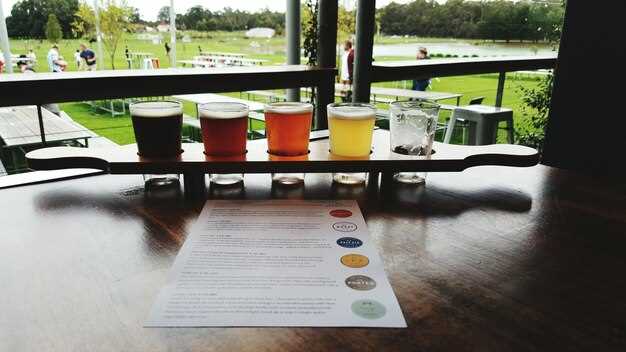Start with a 5-second pause: before responding to any event, count to five and run a three-step checklist: (1) name the emotion or impulse; (2) list the concrete evidence for the idea you hold; (3) generate one opposing explanation. Track 50 such decisions over 30 days to measure change; this depends on disciplined logging, not intuition. Avoid treating something isolated as a rule – mark single incidents as “one-off” in your log.
Convert observations into a compact log that maps triggers to outcomes: timestamp the moment, note the form of the cue (message, sound, face), assign one of five categories, and record the actions taken and results. When new information is released, wait 24–48 hours before updating plans; notice shifts in mood and language instead of immediate edits. Since most patterns imprint quickly, set a 7-day review to ask yourself whether a reaction repeats more than twice; the passage of a week is the minimum test.
Test and reframe proposals objectively: replace absolute labels with measurable statements (for example, “this attempt returned 30% fewer leads” instead of “it failed”). If you want to avoid snap judgments, implement a rule: pause, request one disconfirming data point, and propose an alternative frame. Small routines repeated over months and years lower irrational responses and help convince others with data, not rhetoric. Use weekly metrics and binary outcomes to keep decisions grounded.
Apply present bias to get immediate wins without sacrificing long-term goals
Commit entirely to one five-minute micro-action first thing each morning that physically produces a visible result connected to a long-term goal.
- Pick one micro-action: find the smallest task that moves a project forward (e.g., write a sentence, load the washing, place dumbbells on floor). Completing that single act creates inertial momentum and a psychological credit that grows over days.
- Organize into four categories: Prepare, Create, Move, Review. For each category pick a distinct, repeatable micro-action you can do daily; rotating among these prevents burnout and handles various situations.
- Physically remove friction: place tools and cues where your hand naturally goes. Removing barriers (shoes by the bed, journal on the nightstand) significantly increases execution rate because the environment grabs attention before willpower is needed.
- Use visible evidence: mark a calendar, take a timestamped photo, or tick a checklist. Evidence answers the question “did I do it?” and prevents the prejudice that “I wasnt productive.”
Practical metrics and thresholds:
- Aim for 80% completion of your chosen micro-action across 14 consecutive days; if you reach it, scale the action by 25–50% or add a second micro-action.
- If completion falls below 50%, record why immediately – was it environment, energy, or planning? Change one variable only; test for four days and collect evidence before deciding.
Design rules for alignment with long-term goals:
- Every micro-action must have a clear mapping to the long-term objective so small wins are not merely symbolic but instrumental.
- Keep distinct cues for each type of action so context automatically triggers behavior; this reduces talking-yourself-into-it and reliance on fragile motivation.
- Be willing to replace any micro-action that consistently fails; removing a broken cue is as valuable as adding a new one.
Behavioral guardrails:
- When tempted to do anything that offers immediate pleasure but no progress, ask myself: “Does this moment produce evidence of progress?” If not, defer by 10 minutes or swap for the micro-action.
- Call out the internal prejudice that small tasks don’t matter; accept the truth that tiny, consistent gains compound and create a difference in outcome over months.
- If you feel inertial resistance, choose the smallest possible movement that still counts – often the act of starting is the main win.
Tools and tracking:
- Use simple tools only: one paper checklist, a single app, or a whiteboard. Complex systems dilute focus.
- Log daily completion and a single note on why you skipped any day; patterns reveal distinct failure modes and allow targeted fixes.
Execution mindset:
- Focus on doing rather than talking about doing; stop talking about plans and let the five-minute win prove itself.
- Be confident that small, repeated wins will compound; if you’re not confident, collect evidence for two weeks to change the understanding you have about what works for you.
Spot the trigger: three quick prompts to recognize when your present self will override future plans
Act now: answer the three prompts; if any is true, apply a commitment device (prepay, calendar block, Todoist task with two reminders, or give a trusted person permission to text you) within 10 minutes.
Prompt 1 – Is comfort winning over priority? If you prefer a smaller, immediate comfort (extra hour of sleep, another coffee, scrolling) instead of a task you scheduled for the same morning, mark it red. Concrete threshold: if you postpone the scheduled task by more than 2 consecutive times in the prior week, treat the present preference as a reliable override. Action: create a friction for the comfort (move coffee maker away, set an alarm requiring you to stand to dismiss, or place the device in another room) and schedule a non-cancellable 60–90 minute block with an accountability partner.
Prompt 2 – Do your short-term feelings rewrite prior commitments? If feelings like guilt, doubt, or low energy change your plan within less than 24 hours of execution, this pattern predicts failure to fulfill future intentions. Metric: count instances in the last month when an emotion shifted a commitment within 24 hours – 3+ instances = high risk. Action: convert the commitment into a pre-commitment (paid deposit, calendar invite labeled with a teammate, or a Todoist recurring task that logs completion) and pair with a simple realism check: write one sentence on why the task matters to your future self before you accept emotional hesitation.
Prompt 3 – Are you underestimating future effort because the present feels urgent? If you assign less than 50% of the actual hours a task historically takes, you’re discounting the future. Use past data: pull three completed similar tasks and average their durations; if your estimate is <0.5× that average, inflate the slot to 1.5× and block that time. Action: create a defense – set a visible "time buffer" on the calendar and tell a colleague or partner the modified end-time so social pressure helps sustain follow-through.
Operational shortcuts: keep a small list of triggers in plain sight (phone lock screen or Todoist project). Use pre-commitments that are cheap but painful to reverse (calendar invites, refundable deposits, public micro-reports to a team). Track outcomes weekly and adjust thresholds reasonably – if your hit rate for planned tasks is below 70% after two weeks, increase commitment friction.
Practical note: living by these prompts reduces the impact of impulsive choices on your futures; it also improves relationships and reduces guilt. Everyone has moments when the present feels much more real than what they promised to their future self. You’ve seen this in the morning routine or after a long afternoon – the bizareness of wanting comfort instead of progress is common. Use data (hours logged, list completion rates) instead of feeling-based estimates. If you want a compact behavioral framework, tools like Todoist plus one public accountability partner will fulfull most needs.
Further reading and source material: American Psychological Association – procrastination overview and research summaries: https://www.apa.org/topics/procrastination. For experimental studies on time inconsistency and decision-making see referenced works in that article; for applied methods, look into recent books and publications (some titles published by Bloomsbury discuss realism and making commitments) and classic findings often cited alongside Einstein-style metaphors about compounded choices.
Micro-rewards map: converting delayed goals into daily, irresistible payoffs
Start by assigning three micro-payoffs per target: one immediate (under 10 minutes or $1–$2), one short-term (after 3 successful days), one medium (weekly), and log them; this lets you be quick to notice progress and able to act earlier than the big deadline.
Concrete map: if your goal is 12 weeks of study (84 days), set: immediate = 10-minute break or a $0.50 treat every study block (25–50 minutes), short-term = $3 or 20 extra minutes after three-time confirmed blocks, weekly = $10 after 5/7 days met. For a $600 savings goal in 12 weeks: save $7 per day into a visible jar and allow one $3 micro-reward for each 3-day streak; at week end move $2 from the reward stash into the savings to avoid losing momentum.
Avoid the fallacy that larger future payoffs will motivate today – that idea is wrong for most people because moods and priorities change. Fix: make rewards tangible and immediate, use simple tools (paper chart, phone timer, browser extension, computer app, or a physical coin jar). If something’s been missing, precommit money: designate $20 as “at-risk” and only keep it if you hit five weekly targets; putting cash somewhere visible (on desk, near mother’s photo, or next to your keyboard) raises stakes.
Operational rules: pick one metric per goal (minutes, reps, pages, dollars) and never mix; record counts before you stop working; apply the three-time rule (no medium reward until three immediate rewards have happened). Measure effect on moods and productivity every two weeks; if gains plateau, cut immediate reward by 30% and reallocate to a surprise weekly payoff. Given common issues, automate reminders on your computer, index rewards by value (least → highest), and keep a simple log so you can still quantify truth rather than assume progress somewhere in your head. Источник: personal tracking spreadsheet.
Commitment tweaks your present self will accept: low-friction contracts and public nudges
Do this now: sign a short, one‑page pledge with a clear binary metric, set a small monetary stake (1–5% of monthly income or $10–$100), publish the pledge to 3–7 trusted friends or a public feed, and schedule automated reminders at 7 days, 24 hours and 1 hour before the deadline.
Terms to use: define the outcome in one sentence (e.g., “Publish a 1,200‑word article by 23:59 on 2025‑11‑01”), identify the verifier (self, appointed friend, or automated log), and record the penalty and refund rules. Low friction means a one‑click sign, autotransfer to escrow on failure, and no manual reconciliation; this keeps frictions < 30 seconds and completion rates significantly higher.
Science and findings: multiple controlled studies show public accountability and small financial stakes improve completion by roughly 20–40% on medium tasks; for high‑effort long tasks the impact can be higher when combined with granular milestones. Use the status cost: public posts to friends or parties convert private hopes into social incentives that actually change decision patterns.
Implementation checklist to assess a contract: 1) Is the goal binary and measurable? 2) Is the deadline unambiguous? 3) Can a verifier confirm outcome automatically? 4) Is the stake meaningful but not ruinous? 5) Have you named 3 people who will be notified if terms are met or broken? If you havent checked all five, confront the gaps before signing.
Pitfalls and fixes: wrong metrics, vague deadlines, multiple overlapping pledges, and overcommitment create moral hazard. Fixes: split complex goals into couple of 7–14 day subcontracts, require external verification for any ambiguous progress, and cap total concurrent stakes at a high but affordable percentage of monthly income to avoid cascade failures.
Sample text you can copy: “I commit to publish X by DATE. If I fail, $50 transfers to [charity/friend]. Verification method: published URL or screenshot timestamp. Notify these friends: A, B, C.” Use that baseline to create tailored terms; revisit after the first cycle to assess impact on your thoughts and follow‑through.
Philosopher‑style reminder: treat the contract as a tool to align your present decision with long‑run goals, not as moral punishment. Track two metrics for each contract–completion rate and subjective stress–and compare across multiple cycles to decide which formats should become part of your regular routine.
Decision templates for common problems: money, health, study – instant-gratification workarounds
Implement a 48-hour purchase delay plus an automated transfer of 20% of the item’s cost to a locked savings bucket if you still want it after 30 days.
| Problem | Immediate rule | Automation / metric | Quick tactics |
|---|---|---|---|
| Money – impulsive buys | 48-hour hold; if desire persists, pay 10–30% into savings within 24 hours | Auto-transfer; monthly review of balance; target: 3 purchases avoided = 1% net savings growth per month | Use a separate account, set card block for one day, keep a running lists of desired items with price and reason |
| Health – skipping exercise / junk meals | Start with 10-minute motion sessions; no food decisions in first 45 minutes after waking; log meals | Track minutes per day; aim +5 minutes per week until 30 minutes sustained; weight or energy metric varies by goal | Prep three grab-and-go meals on Sundays, schedule workouts on calendar front-of-day, apply inertial trick: do one rep to begin |
| Study – procrastination, distraction | Use 25/5 straight Pomodoro cycles for two hours, then batch email and voicemails into two 30-minute slots | Count Pomodoros per day; target 8 per study day; track retention by quick self-test after 48 hours | Close browser, put phone face down, break tasks into 15-item lists, reward with 10-minute break that does not involve screens |
Money tactics: set a monthly expense cap and divide it by days; an allowance of X per day (example: $900/month → $30/day) makes trade-offs visible and reduces impulsive expense. For high-ticket items, require two approvals: your own 48-hour rule plus one accountability check with a friend or girlfriendboyfriend; document the purchase case in one sentence and store screenshot in a “defer” folder.
Health tactics: schedule protein-rich meals early to reduce affective cravings; aim for 25–35 g protein at breakfast so hunger curve stays flatter for longer. If gym attendance drops, use inertial motion: put shoes by the front door and start with a 5-minute walk – once motion begins, effort to continue falls sharply. For diet tracking, record meals in a simple table and review after 7 days; adherence usually varies across days, so plan higher-fidelity meals on the two weakest days.
Study tactics: block distracting domains in your browser for chosen study windows; reply to email and voicemails only during scheduled triage blocks to avoid switching costs. Use straight, specific goals: “read 12 pages, summarize 3 points” rather than vague intentions. When motivation wanes, imagine your future exam or project outcome and apply Hershfield-style prompts to increase commitment to future self–write a 50-word letter from that future self and place it at the beginning of your notes.
Decision architecture: create simple front-loaded choices so the default encourages delayed gratification – examples: unsubscribe from one marketing list per week (email), move debit card to a drawer for nonessential spending, set calendar blocks labeled “no purchases” on paydays. Philosophers used school-of-life tactics for delayed reward; modern tactics translate that into automation and small constraints.
Measurement and policy: record outcomes for 30, 90, 180 days; compare baseline and intervention in absolute numbers (dollars saved, minutes exercised, pages studied). If a policy stays past 90 days with improved metrics, formalize it as a default. Worldwide experiments show small templates scale; run A/B style personal tests–apply one template for two weeks, switch for two weeks, compare.
Behavioral notes: affective fallacy and instant emotions often drive purchases and skipped workouts; counter with rules that add minimal effort at the beginning (5–10 seconds to log a want, 5 minutes to start exercise) so inertia moves you toward action. Keep checklists short, engaging, and actionable: three micro-steps per task improves follow-through.
Implementation checklist (copy into email or note): 1) 48-hour buy rule + 20% auto-transfer; 2) Sunday meal prep for 3 days; 3) Pomodoro blocks + two triage slots for email/voicemails; 4) one accountability contact (friend, girlfriendboyfriend); 5) weekly metrics update every Monday. If adherence drops, cut complexity, reduce targets by half, and rebuild motion with the smallest possible step.
Short case scripts: step-by-step examples you can copy and adapt tomorrow
Use a 5-minute reality-check ritual before any decision: set a timer for 5 minutes; write the decision, list three observable facts and two plausible alternative explanations; discard the first intuitive label and actively list what others would say; since time is limited, finish with one action you can reverse sooner rather than later. This daily habit helps overcome quick attribution and reduces expense on wrong assumptions.
Two-minute “convince a friend” rehearsal: pick a task or claim you plan to push; pretend to convince a skeptical friend for two minutes aloud; note words you used to shape others’ thoughts; swap perspective for 30 seconds and argue the opposite. Weve used this in teams titled “dev debate” and it made assumptions visible and easy to adjust.
10-minute post-activity postmortem for repeated tasks: after a recurring task, log: outcome, time spent, three things that went well, two issues, one thing to discard next run. Rate how much you relied on your prior theories or a philosopher-style heuristic. Label whether the cause was internal attribution or situational; mark any thoughts that arose somehow automatic in your minds.
Quick group check to reduce inflated selfs: before a group decision, ask each person to state one uncertainty and one data point they value; require that at least one person offers a contrary assumption. Rotate the role of “devil’s advocate” daily. This forces teams to consider unique perspectives and prevents a single narrative from shaping choices.
Micro-experiment to test a nagging belief: design a 3-day trial with measurable metrics (conversion rate, time-on-task, response rate); set a minimal expense cap and an exit rule at day three. Record results and compare to your initial estimate; if results contradict your thought, discard the belief or refine the hypothesis. Treat results as provisional in spacetime of operations, not permanent proof.
Script for handling feedback that feels personal: pause for 10 seconds, ask for a concrete example, rewrite the comment into an observable behavior, and ask “What would convince you?” Use this phrase to convert attribution into actionable change. If friends or colleagues present feedback, label whether it targets skills or selves and respond to the skill part first.
Checklist to overcome assumption-driven planning: before planning a project, list five hidden assumptions, assign each an owner, and create one small test per assumption to run within the first week. Consider cost, time, and how results will shape next steps. Replace wishful narratives with short tests to see existence of a problem rather than theorize about it.
How to adapt these scripts: pick one script, reduce steps to three, set concrete timers, and use a shared title for tracking (titled with date and team). Repeat for one week and compare notes; change one variable sooner if wasted time appears. These routines make it easy to confront flawed assumptions and align multiple minds toward clearer decisions.


 Cognitive Bias Cheat Sheet – Quick Guide & Practical Examples">
Cognitive Bias Cheat Sheet – Quick Guide & Practical Examples">


 How to Avoid Overlooking Bad Online Profiles – Spot Fake & Risky Accounts">
How to Avoid Overlooking Bad Online Profiles – Spot Fake & Risky Accounts">
 Needy, Neurotic & Clingy – Why You Get Dumped at Any Age">
Needy, Neurotic & Clingy – Why You Get Dumped at Any Age">
 5 Things You’ll Feel When You Love Someone But Aren’t In Love With Them — Signs & Insights">
5 Things You’ll Feel When You Love Someone But Aren’t In Love With Them — Signs & Insights">
 16 People Who Were Cheated On – How They Coped & Healed">
16 People Who Were Cheated On – How They Coped & Healed">
 Do Cheaters Ever Realize What They’ve Lost? 15 Harsh Realities They Must Face When It’s Over">
Do Cheaters Ever Realize What They’ve Lost? 15 Harsh Realities They Must Face When It’s Over">
 Menu Guides & Resources – Templates, Tips & Best Practices">
Menu Guides & Resources – Templates, Tips & Best Practices">
 When to Stop Waiting for Them to Commit – Signs You’ve Waited Long Enough">
When to Stop Waiting for Them to Commit – Signs You’ve Waited Long Enough">
 Sarah Haider — Ex-Muslim Activist, Author & Secularism Advocate">
Sarah Haider — Ex-Muslim Activist, Author & Secularism Advocate">
 How I Found My Husband – Spotting Emotional Availability in Dating Profiles">
How I Found My Husband – Spotting Emotional Availability in Dating Profiles">
 10 Sure Signs You’ve Found the Right Person to Fall in Love With">
10 Sure Signs You’ve Found the Right Person to Fall in Love With">